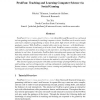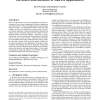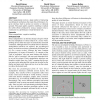770 search results - page 64 / 154 » Using web browser interactions to predict task |
113
Voted
WWW
2009
ACM
16 years 1 months ago
2009
ACM
JavaScript is an interpreted programming language most often used for enhancing webpage interactivity and functionality. It has powerful capabilities to interact with webpage docu...
221
Voted
CSEE
2011
Springer
14 years 4 months ago
2011
Springer
Pex4Fun (http://www.pexforfun.com/)from Microsoft Research is a web-based serious gaming environment for teaching computer science. Pex4Fun can be used to teach and learn computer...
117
click to vote
ESWS
2009
Springer
15 years 7 months ago
2009
Springer
Vocabularies are the building blocks of the Semantic Web providing shared terminological resources for content indexing, information retrieval, data exchange, and content integrati...
106
Voted
SOSP
2007
ACM
15 years 9 months ago
2007
ACM
The rise of the software-as-a-service paradigm has led to the development of a new breed of sophisticated, interactive applications often called Web 2.0. While web applications ha...
119
Voted
CHI
2001
ACM
15 years 4 months ago
2001
ACM
Direct manipulation involves a large number of interacting psychological mechanisms that make the performance of a given interface hard to predict on intuitive or informal grounds...



